Spring in Quebec comes late. It was mid-May before the ground was dry enough for trucks to cross the lawn. And we needed trucks to complete The Aqueduct.
 |
| The Aqueduct on April 6. Snow still lingers in shady areas and everything is a mess. |
The reflecting pool went in — first concrete blocks, then steel plates to cover them.
Inside the pool we added a square box with a perforated bottom. Water would drop into the box and seep out into the pool itself, eliminating splashing and keeping the water in the reflecting pool calm. Views of the sky and surrounding landscape would be as clear as possible, broken only by ripples of wind.
More steel boxes arrived, planters that would fill gaps beside the steps. Once these were lined with styrofoam insulation and filled with soil, we were ready to begin planting. And about time, too: it was the end of June!
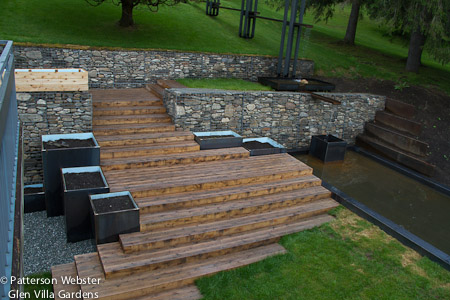 |
| Steel planters wait to be filled. They protect the sides of the steps., although we will add a hand rail. A wooden planter sits on top of the gabion wall. |
I wanted plants with strong forms, in blue-grey tones to complement the colour of rusty steel. I consulted Eric Fleury from Hodgins and Associates and we chose three ornamental grasses: calamagrostis brachytricha, sporabolus heterolopsis, and panicum virgatum ‘Shenandoah.’ The panicum pays homage to my roots in Virginia, and to my grandparents who farmed in the Shenandoah Valley. Its new growth is rust-red and the fall foliage is burgundy, so it should be spectacular against the grey stone wall.
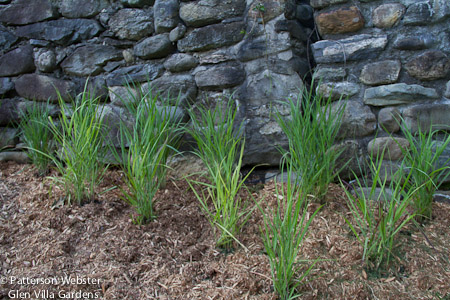 |
| There was no sign of red in these panicum ‘Shenandoah’ on the day they were planted, but there was after a few weeks. |
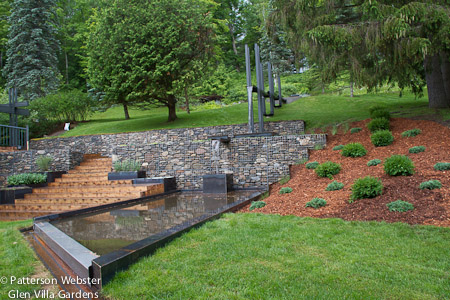 |
| Plantings on the hillside beside The Aqueduct include juniper ‘Blue Rug’ and ‘Green Velvet’ boxwood. |
Above it, in the middle planter, is sedum ‘Autumn Fire’.
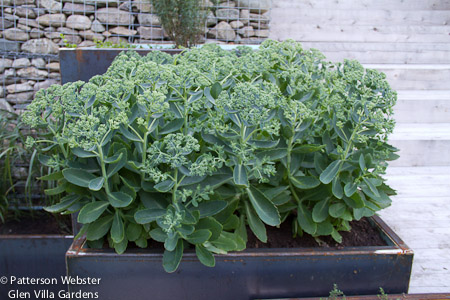 |
| Autumn Fire is similar to Autumn Joy, but with thicker foliage and brighter flowers. It was developed in Quebec, making it a good choice for me. |
In the tallest planter, lysimachia nummularia surrounds a willow (salix purpurea ‘Nana’.) As soon as it was in the planter, I started second guessing. ‘Nana’ is meant to stay small but I think it will become too big, too bushy and not interesting enough for the space. If it does what it is supposed to do, however, it will become a silver ball. I like that vision — a silvery drop of water, beside water dropping. I’ve pruned it already and will give it a year before deciding whether to keep it, but I welcome ideas about what to put in its place.
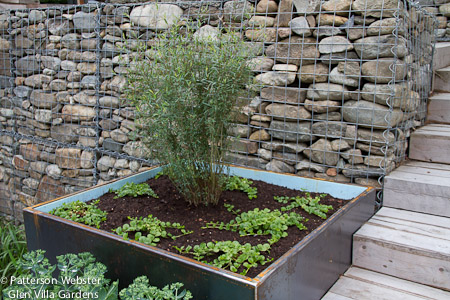 |
| The willow shrub isn’t round yet. I may replace it. But with what? |
In part shade at the base of the tall gabion wall is a long thin planter filled with calamagrostis brachytricha, or Korean feather reed grass. I haven’t used this grass before; I hope it is a good choice.
 |
| Calamagrostis brachytricha is planted in the lowest and shadiest planter box. Caroline works for a local firm that supplied the plants. |
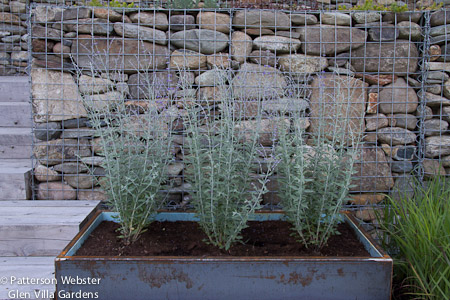 |
| Perovski ‘Little Spire’ doesn’t inspire me yet. Next year it should be better. |
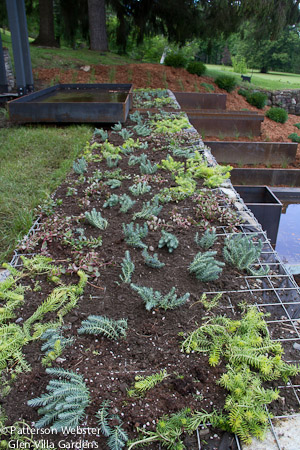 |
| Sedum on top of the gabion wall |
 |
| The ‘no pattern’ pattern is starting to emerge. |



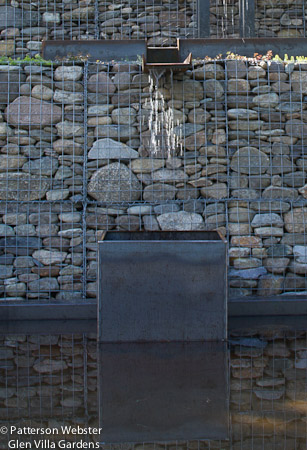





WOW! This is coming along magnificently – Villa D’Estes watch out!
liz-montreal
To say I’m pleased with the project is an understatement. I think it looks fantastic, and will only get better with time.
I just read all three aqueduct posts. You sure don’t do anything halfway. It makes my garden building look like playing in a sand pile by comparison.
It has become a much bigger project than originally planned. But at each step of the way, the best choices seemed clear. Still some work to do, but it’s coming together really well.